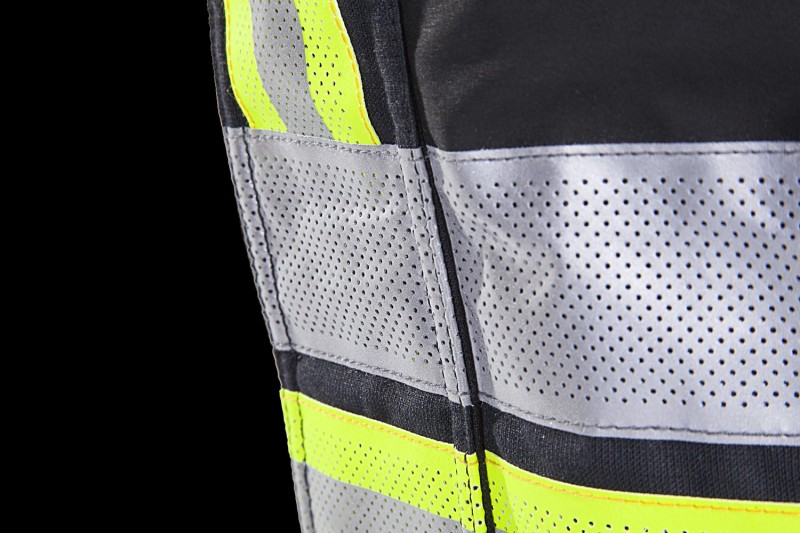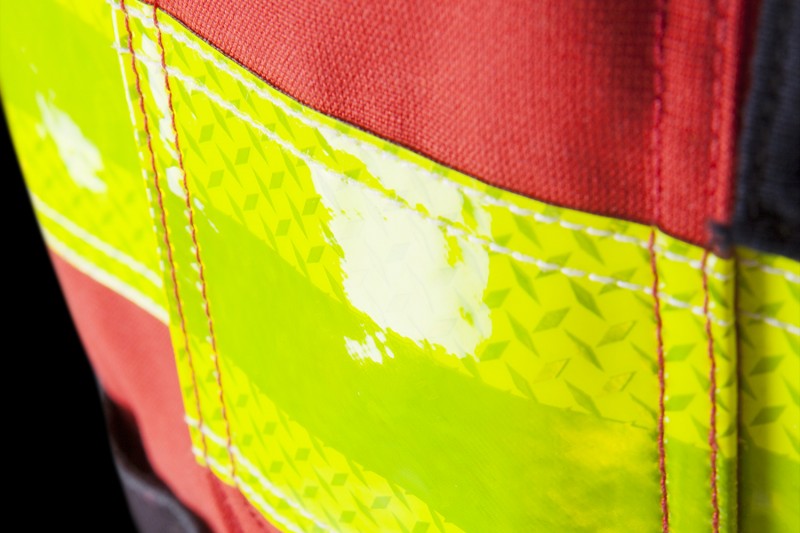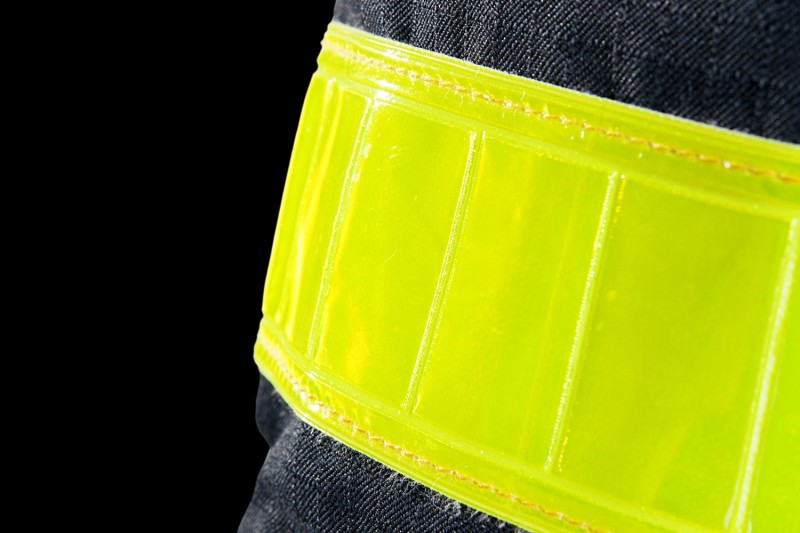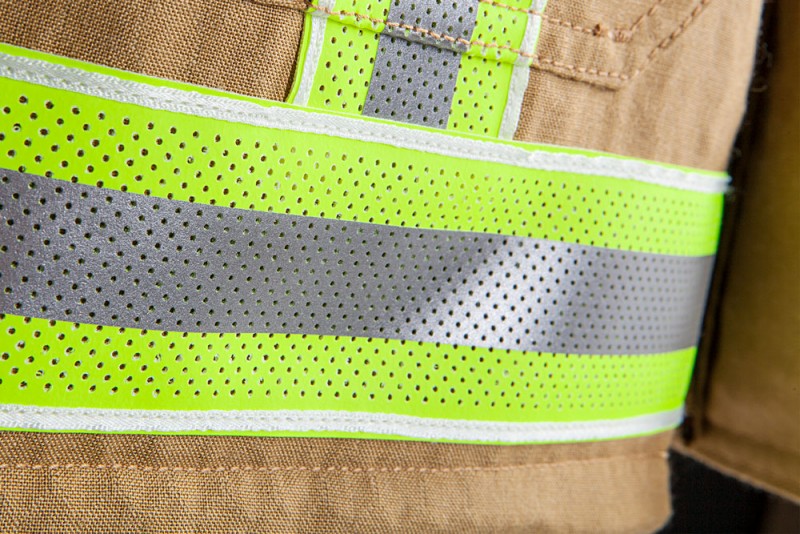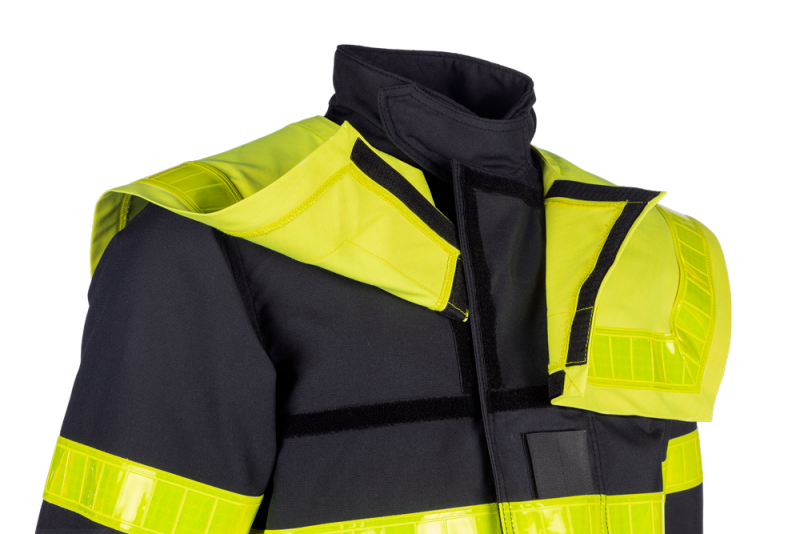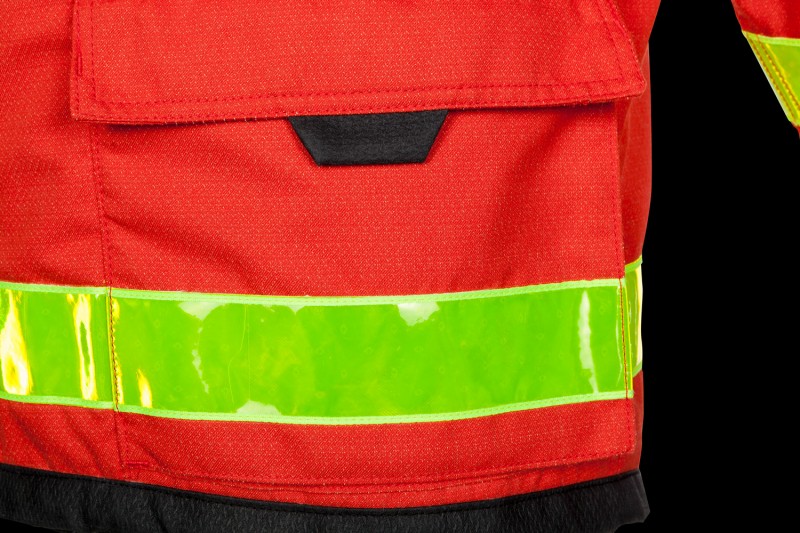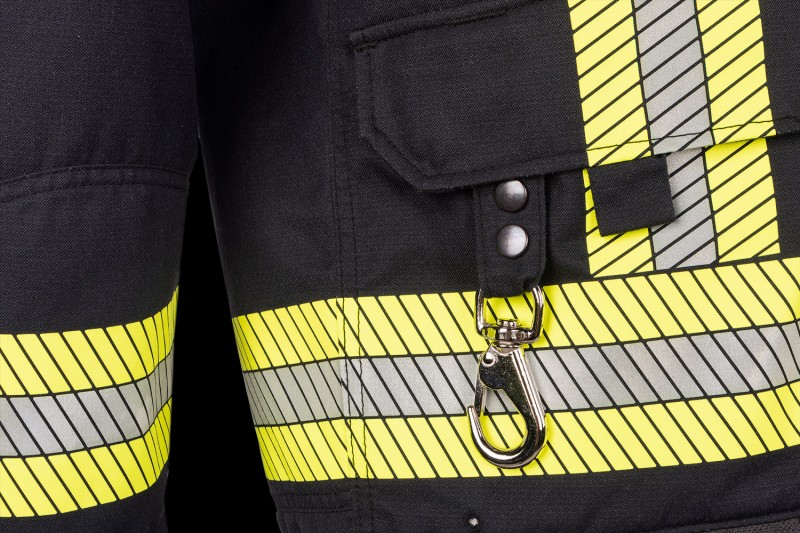Fluorescent striping - yellow glass beads
This striping has a minimum width of 5 cm and only its fluorescent part complies with the EN ISO 20471 (EN 471) (high visibility) requirements. Its retroreflective qualities may not be taken into account for the high visibility standard.
Some types of striping are perforated to improve breathability. Excessive heat will escape more easily thanks to the perforated striping. That way, firemen are extra protected from burns.



